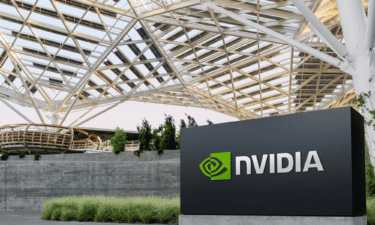“Struggling” might (the key word there, is might) not exactly be the most fitting description to apply to DHX Media (TSX:DHX)(NASDAQ:DHXM) these days.
After all, DHX stock is up more than 78% off its September lows after the company announced it had completed its strategic review and reported fourth-quarter and fiscal 2018 earnings that surpassed some analysts’ expectations.
But taking another step back, this is also a company which has lost over 80% of its value after making an all-time high in the fourth quarter of 2014, and a company that — thanks to a couple of missteps — had some wondering if it would even survive to see the light of day beyond 2018.
Largely speaking, those missteps were a couple large-scale acquisitions that, at least so far, have proven to be ill-advised and perhaps suggest that this is a company running out of creative ideas to develop for its content platforms.
The first acquisition was its purchase of the Family Channel business from Bell Media, a subsidiary of BCE for approximately $170 million in cash in 2013.
Hindsight is, of course, 20/20, but looking back, it does seem at least questionable that a digital entity like DHX, which is primarily focused on online platforms, including its super-popular Wild Brain channel, would spend hundreds of millions on a cable TV franchise at exactly a time when households were turning away from their cable subscriptions in droves.
Perhaps its not all that surprising then that following that Family Channel purchase, DHX stock went on to lose half of its value as investors grew increasingly frustrated with its inability to meet expectations for growth, all the while continuing to rack up an increasing debt load.
Then in the spring of 2017, DHX announced it was purchasing the Peanuts and Strawberry Shortcake franchises from Iconix Brand Group for US$345 million.
That deal, as was the case with the Family Channel acquisition, was funded primarily through the issuance of new debt in a series of moves that, together, saw value of the company’s financial obligations increase more than 10-fold in under three years.
And while revenues at the company had also grown significantly over that span, they hadn’t grown by nearly the same magnitude as the size of the company’s balance sheet.
Bottom line
What’s most unsettling about the Peanuts and Strawberry Shortcake acquisition is what it appears to be revealing about what is happening inside the company. That $345 million is a lot of money to shell out for new content — but this isn’t even new content we’re talking about here. Peanuts was originally created in the 1950s, while Strawberry Shortcake came to life in back in 1979.
In the age of YouTube, digital animation, and mobile devices, exactly how relevant are these franchises supposed to be with today’s youths? Would it not be a lot more efficient to develop content in-house at its company-owned studios?
Moreover, at the time of the Peanuts deal, the seller, Iconix, desperately needed cash in order to keep its creditors at bay. And despite that weak bargaining position, Iconix still managed to sell those two franchises to DHX at a price $65 million greater than what it had paid for them just a few years earlier.
It all just reeks to me of desperation from a company that wanted to deliver growth for analysts and shareholders — and was running out of its own ideas, so it was content (pun not intended) to go out and overpay for someone else’s.
While it might have been able to convince itself at the time that by way of the Peanuts franchise it was about to make a big splash in going for the “winning play,” it looks now like it might have just had the ball yanked out from under it at the last minute.
Good grief…







